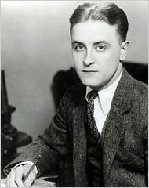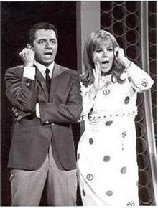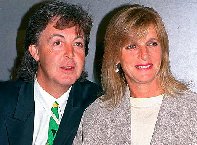 Crazy tree!
Crazy tree!The Great Fire of New York was a devastating fire that burned through the night of September 20, 1776, and into the morning of September 21, on the West Side of what then constituted New York City at the southern end of the island of Manhattan. It broke out in the early days of the military occupation of the city by British forces during the American Revolutionary War.
The fire destroyed from 10 to 25 percent of the buildings in the city, while some unaffected parts of the city were plundered. Many people believed or assumed that one or more people deliberately started the fire, for a variety of different reasons. British leaders accused revolutionaries acting within the city and state, and many residents assumed that one side or the other had started it. The fire had long-term effects on the British occupation of the city, which did not end until 1783.
Background
The American Revolutionary War began in April 1775. The city of New York was already an important center of business but had not yet become a sprawling metropolis. It occupied only the lower portion of the island of Manhattan and had a population of approximately 25,000. Before the war began, the Province of New York was politically divided, with active Patriot organizations and a colonial assembly that was strongly Loyalist. After the battles of Lexington and Concord, Patriots seized control of the city and began arresting and expelling Loyalists.
Early in the summer of 1776, when the war was still in its early stages, British General William Howe embarked on a campaign to gain control of the city and its militarily important harbor. After occupying Staten Island in July, he launched a successful attack on Long Island in late August, assisted by naval forces under the command of his brother, Admiral Lord Richard Howe. American General George Washington recognized the inevitability of the capture of New York City, and withdrew the bulk of his army about 10 miles north to Harlem Heights. Several people, including General Nathanael Greene and New York's John Jay advocated burning the city down to deny its benefits to the British.[9] Washington laid the question before the Second Continental Congress, which rejected the idea: "it should in no event be damaged."
On September 15, 1776, British forces under Howe landed on Manhattan. The next morning, some British troops marched toward Harlem, where the two armies clashed again, while others marched into the city.
A civilian exodus from the city had begun well before the British fleet arrived in the harbor. The arrival the previous February of the first Continental Army troops in the city had prompted some people to pack up and leave, including Loyalists who were specifically targeted by the army and Patriots. The capture of Long Island only accelerated the abandonment of the city. During the Continental Army's occupation of the city, many abandoned buildings were appropriated for the army's use. When the British arrived in the city, the property of Patriots was similarly appropriated for the use of the British army.
Fire
According to the eyewitness account of John Joseph Henry, an American prisoner aboard HMS Pearl, the fire began in the Fighting Cocks Tavern, near Whitehall Slip. Abetted by dry weather and strong winds, the flames spread north and west, moving rapidly among tightly packed homes and businesses. Residents poured into the streets, clutching what possessions they could and found refuge on the grassy town commons (today, City Hall Park). The fire crossed Broadway near Beaver Street and then burned most of the city between Broadway and the Hudson River. The fire raged into the daylight hours and was stopped by changes in wind direction as much as by the actions of some of the citizenry and British marines sent in aid of the inhabitants. It may also have been stopped by the relatively undeveloped property of King's College, located at the northern end of the fire-damaged area. Estimates for the number of buildings destroyed range from 400 to 1,000, representing between 10 and 25 percent of the 4,000 city buildings in existence at the time. Among the buildings destroyed was Trinity Church; St. Paul's Chapel survived.
Effect on British occupation
Major General James Robertson confiscated surviving uninhabited homes of known patriots and assigned them to British officers. Churches, other than the state churches (Church of England) were converted into prisons, infirmaries, or barracks. Some of the common soldiers were billeted with civilian families. There was a great influx of Loyalist refugees into the city resulting in further overcrowding, and many of these returning and additional Loyalists from patriot-controlled areas encamped in squalid tent cities on the charred ruins. The fire convinced the British to put the city under martial law rather than returning it to civilian authorities. Crime and poor sanitation were persistent problems during the British occupation, which did not end until they evacuated the city on November 25, 1783.
- 1 (15-ounce) package strawberry cake mix
- 1 cup mashed bananas (2-3 very ripe bananas)
- 1 cup heavy cream
- 1 cup milk
- 1 (4 serving size) package instant banana cream pudding and pie filling
- Preheat oven to 350º. Coat a 9- x 13-inch baking dish with cooking spray.
- In a large bowl, prepare cake mix according to package directions. Stir in bananas until thoroughly combined. Pour batter into baking dish. Bake 35 to 40 minutes or until toothpick inserted in cake comes out clean. Let cool.
- Meanwhile, in a large bowl with an electric mixer, beat heavy cream, milk, and pudding mix until thickened. Frost cake, then refrigerate until ready to serve.
1924 – Sheila MacRae, singer & actress (d.2014)

1930 – John W. Young, American astronaut (d.2018)
1936 – Jim Henson, American puppeteer (d. 1990)
1941 – Linda McCartney, American singer and photographer (d. 1998)
For those who enjoy hunting and fishing, doing so responsibly is important. Following safety guidelines keeps them and others safe. However, they also strive to keep their hobbies alive. To do so, they follow the laws and guidelines put in place for each season.
Every year, limits fluctuate depending on the population of birds, fish, and other game. At times, the population is so high, there’s a need to reduce an invasive species. Other species require careful regulation to prevent over hunting and fishing.
While hunting or fishing, many enjoy the beauty of nature. They explore areas of the country they may not normally see. Wilderness brings families together or friends for bonding time. Hunting and fishing are about respect for the land, the habitat, and each other, too.
HOW TO OBSERVE HUNTING AND FISHING DAY
Take the day to go out hunting or fishing. Be safe. Follow posted guidelines and hunt within the season. Share your experiences and enjoy the great outdoors. While you’re out, be sure to take an active role in teaching future generations.
NATIONAL HUNTING AND FISHING DAY HISTORY
The day dates back to the 1960s. In 1972, by Senate Joint Resolution 117, Congress requested the President to declare the fourth Saturday of September 1972 as National Hunting and Fishing Day. On May 2 of the same year, President Richard Nixon signed proclamation 4128 designating the observance to occur the Fourth Saturday in September.










1 comment:
The article about the New York fire is very interesting! Thanks, Susan!
Post a Comment